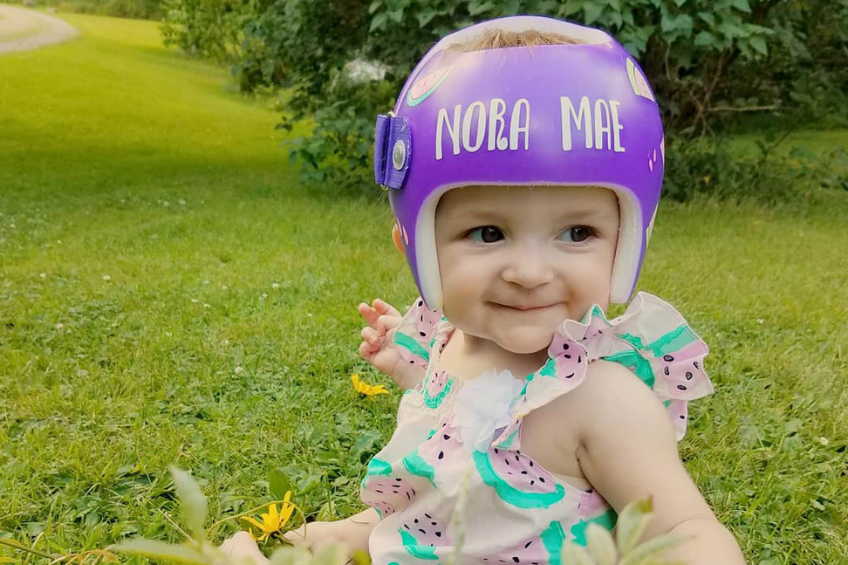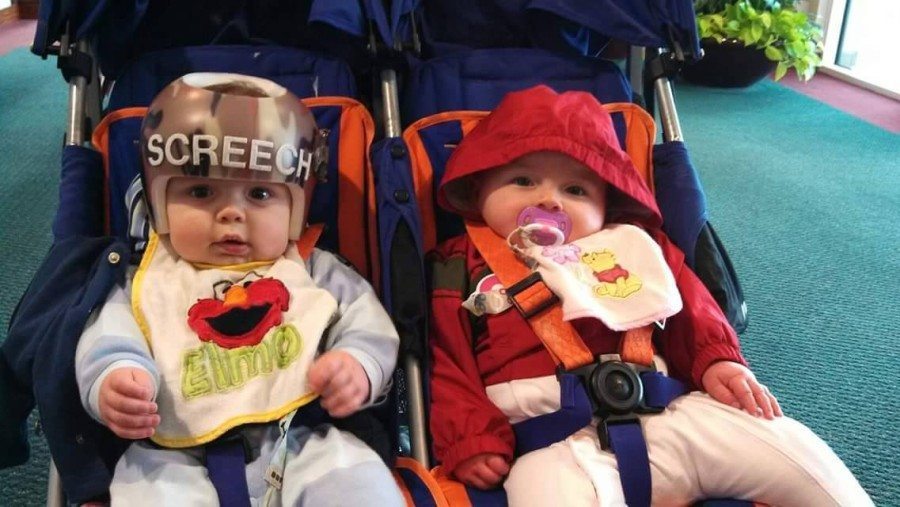Why Do Some Babies Wear Helmets? Babies are unable to ride bicycles or participate in contact sports, so why do some babies wear helmets? Some babies are born with misshapen skulls, which may become permanent as they grow. Helmet therapy, also known as helmet holding, cranial orthosis, or helmet orthosis is a treatment that aids in the shaping of the baby’s skull.
When a baby’s cranial sutures have not fused, they must usually wear a helmet between the ages of 4 months and 1 year. Correcting the shape of the skull may also be required to avoid future health problems.
Contents
Why Do Some Babies Wear Helmets?
Why Do Some Babies Wear Helmets? Infants with a misshapen skull should wear helmets between the ages of 4 months and 1 year. When a newborn is examined by a pediatrician, the circumference, as well as the shape of the baby’s skull, are measured, and if a large flat spot is discovered, helmet therapy is recommended.
It should ideally be done between the ages of 4-6 months. The soft spots, i.e., fontanels as well as ridges, i.e., sutures, of a baby’s skull are still malleable, as well as the cranial bones have not merged. As the baby grows, the cranial sutures start to fuse, and the shape of the skull becomes less malleable.
What Situations Require a Baby to Wear a Helmet?

The purpose of cranial helmets for babies is to resolve the shape of their skulls. Because a baby’s skull is soft, it is popular for it to flatten when lying down on its back for prolonged periods of time. A flat skull, on the other hand, can be the result of a genetic condition. Why Do Some Babies Wear Helmets? Helmet therapy can be used to treat the following conditions:
Craniosynostosis
Plagiocephaly
Why Do Some Babies Wear Helmets? Plagiocephaly, also known as a flat head syndrome, occurs when one side of a baby’s head flattens out due to constant pressure. This usually happens to the back of the skull when the baby is lying on its back for extended periods of time. Positional plagiocephaly is the medical term for this condition. According to the American Academy of Paediatrics, laying a baby on his or her back is the least risky sleeping position.
Because plagiocephaly has no effect on the baby’s brain development, helmet therapy is typically recommended when severe deformation has not continued to improve with other treatment methods. In cases of plagiocephaly, the Congress of Neurological Surgeons has suggested physical therapy or continually changing the baby’s position.
When Should a Baby Wear a Helmet?

After a year, a baby’s skull begins to harden, and the helmet becomes ineffective at softly shaping the skull. As a result, it is advised that the baby wear a cranial helmet between the ages of 4-6 months. During the child’s infancy, your pediatrician will advise you on this treatment every 2 months after birth.
How Long Does a Baby Need to Wear a Helmet?
Babies typically wear head-shaping helmets for 23 hours per day. You can take it off while bathing them or dressing them. While this may appear to be an excessively long period, it is essential because the baby’s skull will only be malleable for a few months. It is critical that they finish the helmet therapy already when their cranial sutures permanently fuse.
Cranial helmets must be worn for an average of three months. The time frame may vary depending on the severity of the condition. The pediatrician will regularly check the shape of the skull to make necessary adjustments during treatment.
Do Helmets that have been remolded cause discomfort?
A baby skull shape helmet is really not painful; it is also not uncomfortable. The helmet is made of soft foam and therefore is customized for each child’s comfort. However, if it is not properly fitted or cared for, it may produce a foul odor and cause skin irritation, causing discomfort. The doctor may make adjustments to accurate the helmet fit.
What Sets Cranial Remolding Helmets Apart From Others?
Cranial helmets differ from other types of helmets in that they are prescribed by licensed physicians such as certified pediatric orthotists. Using a plaster mold, they are custom-made to the baby’s head measurements. They may also be adjusted as needed during treatment. The outside of these helmets is hard, but the inside is soft, applying consistent pressure to the protruding side of the head, allowing the flat spot to expand. They are intended to reshape the baby’s skull rather than protect it from injury.
Softer skulls in babies allow for easier passage through the birth canal and promote brain growth during the first years of life. However, this vulnerability can result in abnormal baby head shapes, which must be treated. Craniosynostosis-related abnormal head shapes can also impair brain development, making cranial helmets essential to the baby’s treatment. Your child will experience no pain or discomfort as a result of this therapy. However, you must follow the pediatrician’s instructions regarding helmet care.
